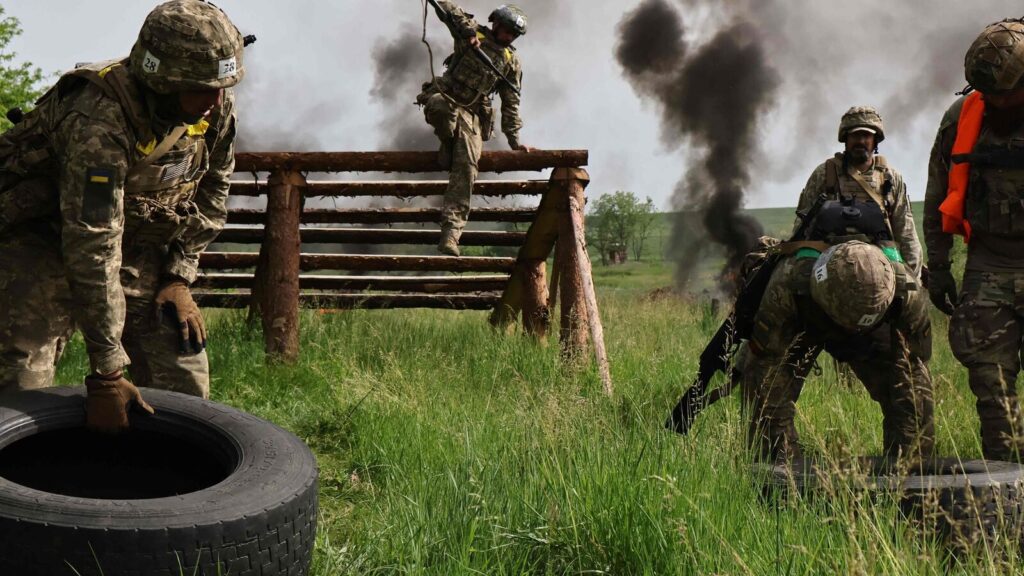What makes a good NATO ally? Debates over burden-sharing have “moved and shaken” the alliance ever since its foundation in 1949, says Rafael Loss of the European Council on Foreign Relations, a think-tank. Most recently, Donald Trump, in both his first and his present term, has justifiably railed against Europeans for not paying their fair whack while America keeps them all safe.
He has struck a chord, even with the laggards. Belgium’s defence minister has vowed to end a “period of national shame” whereby the country “was not loyal to its status as a founding member of NATO, but acted as the most notorious free rider of the entire alliance”. Even Iceland, which has no armed forces, is looking into ways of being “a good ally”.
To get a sense of how things stand, look to the “three Cs”: cash (how much is spent), capabilities (what it is spent on) and commitment (deployment on missions). Begin, as politicians generally do, with cash. At first glance there is much to commend. All but ten of NATO’s 32 members meet the current spending target of 2% of GDP, compared with 25 delinquents a decade ago. Italy and Spain, two of the alliance’s lowest spenders, have pledged to hit it this year, too. But the positives mostly stop there. For one thing, the 2% goal is obsolete; at the summit that will open on June 24th in The Hague, the alliance is expected to agree to a new target of 3.5% of GDP, plus a further 1.5% for complementary infrastructure. Moreover, the narrow focus on percentages is a poor way of measuring fighting readiness. Members have long padded their figures by cramming barely related budget items under the umbrella of defence.

View Full Image
A better gauge of who is pulling their weight is to look at what the cash is spent on. NATO asks that members spend at least 20% of their military budgets on equipment. Virtually all meet that mark (see chart), though it is likely to be raised to one-third at the summit. But again, a focus on numbers can obscure whether the kit serves the purpose of collective defence. Take Greece. Last year it lavished 36% of its military budget on equipment, one of the highest rates. Yet much of that is focused on countering Turkey, another NATO ally, not Russia.
The alliance has long sought to influence the kit bought by members through the NATO Defence Planning Process. Under this, allies agree to buy equipment based on the alliance’s operational needs. But two decades of fighting jihadists bent that process out of shape. Many members invested in a hotch-potch of systems without much co-ordination. The Russia threat has helped focus minds. “Instead of building forces for a range of potential scenarios across multiple theatres,” write Angus Lapsley and Admiral Pierre Vandier, two NATO officials in charge of the new planning cycle, allies will be asked to “focus primarily” on deterring Russia.
What the division of labour will look like is not yet clear. NATO is expected to sign off on new “capability targets” in June, which will determine the equipment each member will be asked to provide. They will probably prioritise areas where America has traditionally dominated but may now pull back, such as intelligence collection, deep strike or strategic lift. Just over three-quarters of members have agreed to the new plans, including “those who [don’t] usually accept”, noted Mr Vandier.
NATO is mulling greater specialisation. The head of its Military Committee, Admiral Giuseppe Cavo Dragone, has called for a “multi-speed approach” whereby bigger armed forces would take on the brunt of projecting power against Russia, while smaller states focus on more humdrum but achievable tasks like logistics or cyber-security. That is already the case to some extent. Luxembourg, with just 900 soldiers, is a critical node in providing space-based satellite communications and contributes to NATO’s spyplane programme. Iceland operates an air-defence and surveillance system. But cajoling recalcitrants like Spain and Italy might be trickier. Planners could play to their strengths by asking them to invest more in maritime assets.
NATO should take heart when it comes to actual operational commitments, the third C. Even the stingiest allies have skin in the game. On the eastern flank, Spain is in charge of a brigade-sized multinational force in Slovakia, and Italy oversees one in Bulgaria. Portuguese fighter aircraft help patrol the skies over the Baltics. Nearly every small member—from Croatia and Albania to Slovenia—contributes troops to NATO’s eastern flank.
The more pressing question is whether these limited commitments will be beefed up. In the case of a major war in the east, NATO wants to be able to muster around 100,000 troops within ten days, a sharp jump from the 40,000 it budgets for today. It wants to raise a further 200,000 troops within 30 days. Without American boots, Europeans will struggle to be ready to reach those targets, unless they spend considerably more on recruitment. Cash might still be king after all.
© 2025, The Economist Newspaper Limited. All rights reserved. From The Economist, published under licence. The original content can be found on www.economist.com
Source:https://www.livemint.com/politics/as-the-nato-summit-approaches-more-than-cash-is-at-stake-11749820747065.html

